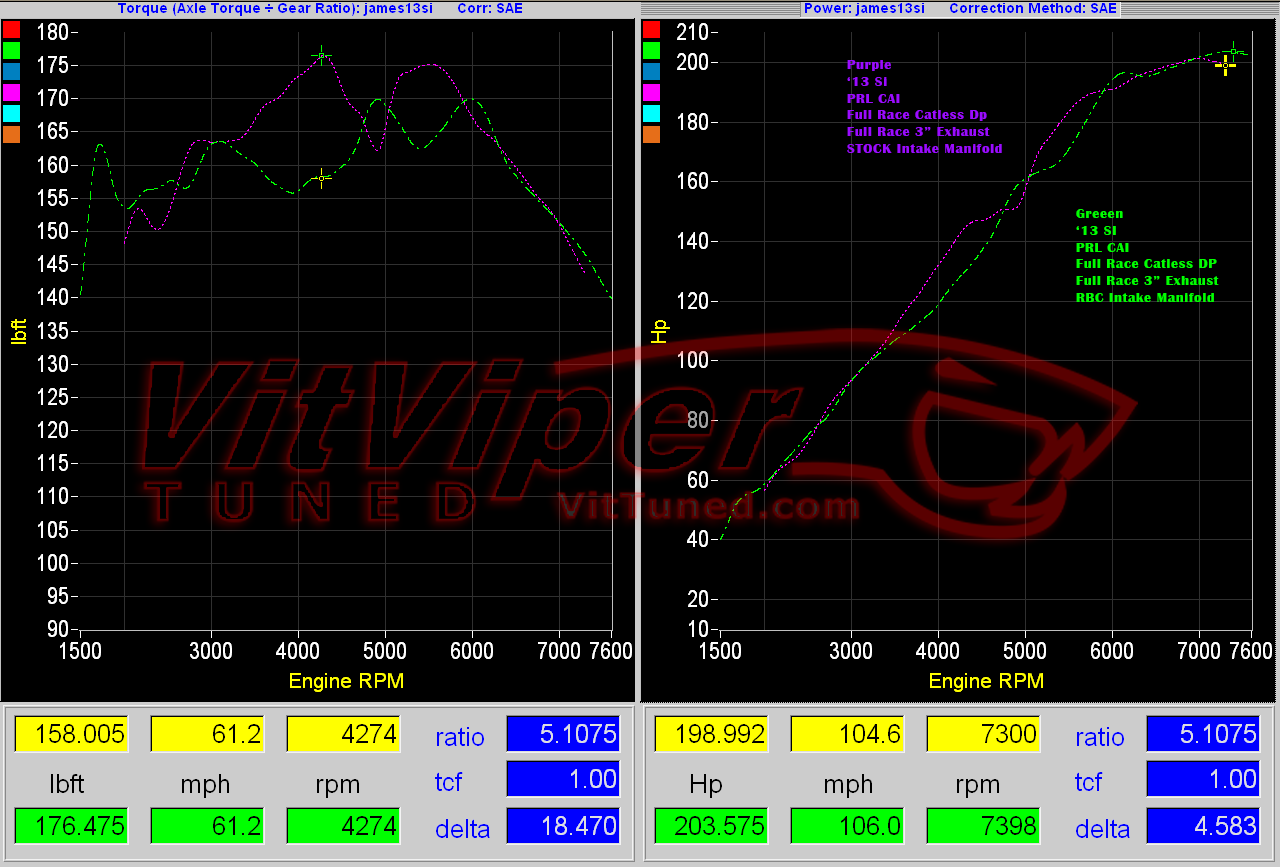VitViper
Well-Known Member
- 445
- 626
Dyno clearly labeled. Picture is worth a 1000 words?

Keep in mind, it is 2 different cars, but the difference in power is so large when the rest of the mods are identical it can't really be thrown out to "different cars".
Keep in mind, it is 2 different cars, but the difference in power is so large when the rest of the mods are identical it can't really be thrown out to "different cars".




